Initializing a Windows Data Disk
Scenarios
This section uses Windows Server 2008 R2 Enterprise as an example.
The method for initializing a disk varies depending on the OSs running on the server. This document is for reference only. For detailed operations and differences, see the product documents of the OSs running on the corresponding BMSs.
Prerequisites
- You have logged in to the BMS. For details, see section "Logging In to a Windows BMS" in Bare Metal Server User Guide.
- A data disk has been attached to the BMS and has not been initialized.
Procedure
- On the desktop of the BMS, click Start. Right-click Computer and choose Manage from the short-cut menu.
The Server Manager window is displayed.
- On the navigation pane on the left, choose Storage > Disk Management.
The Disk Management window is displayed.
- Disks are listed in the right pane. If the added disk is in the Offline state, set it to Online.
Then, initialize the disk.
- Disks are listed in the right pane. In the Disk 1 area, right-click Offline and choose Online from the displayed menu to set the disk online.
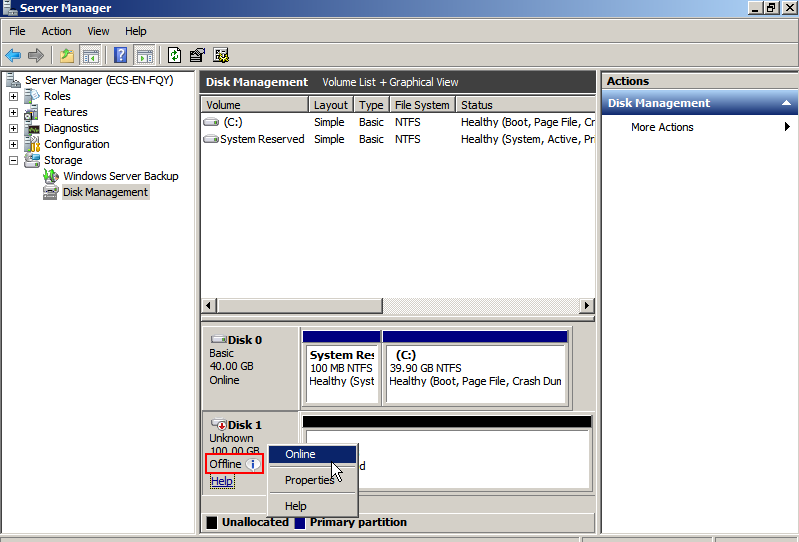
- After setting the disk online, the disk 1 status changes from Offline to Not Initialized. Right-click the disk status and choose Initialize Disk from the displayed menu.

- In the Initialize Disk dialog box, select the target disk, click MBR (Master Boot Record), and click OK.


If you change the disk partition style after the disk has been used, the original data on the disk will be cleared. Therefore, select a proper disk partition style when initializing the disk.
- Right-click the unallocated disk space and choose New Simple Volume.
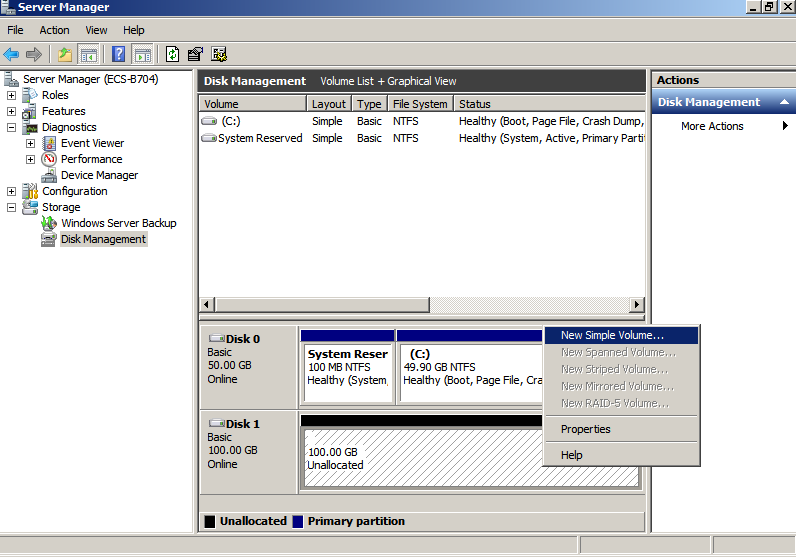
- On the displayed New Simple Volume Wizard window, click Next.

- Specify the simple volume size as required (the default value is the maximum) and click Next.
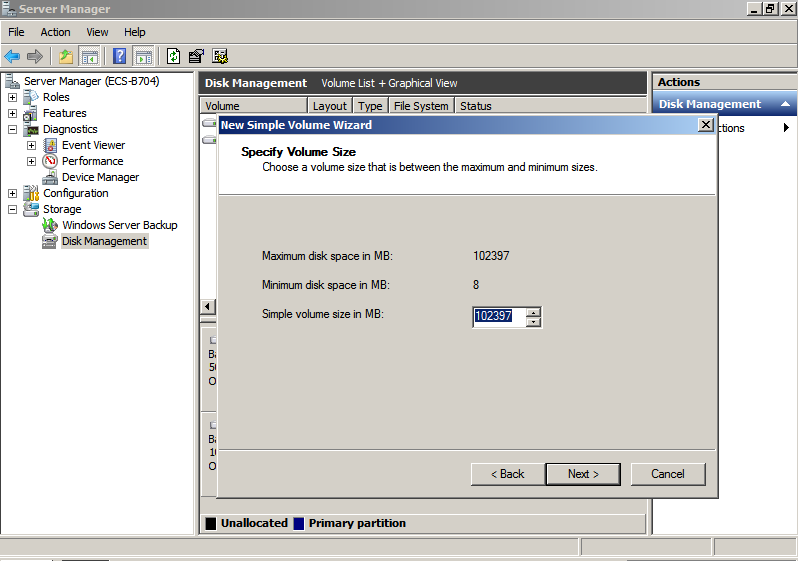
- Assign the drive letter and click Next.

- Select Format this volume with the following settings, set parameters based on the actual requirements.
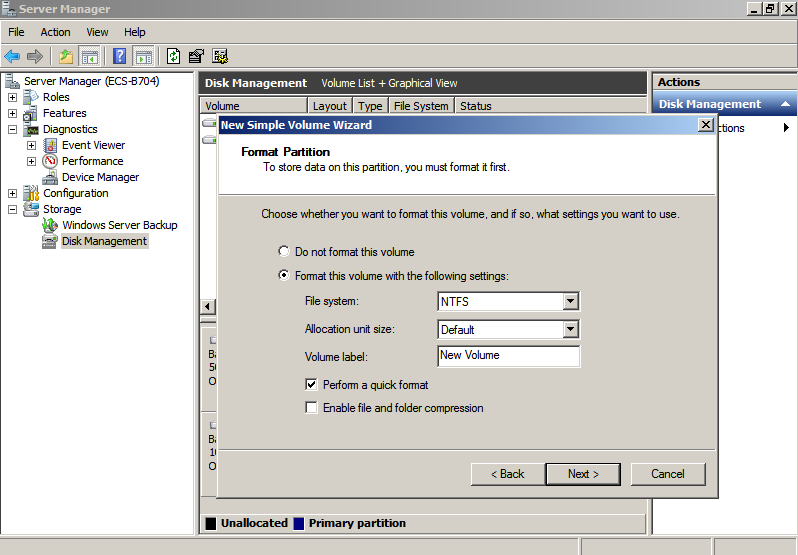
- Click Next.
Figure 1 Completing the partition creation
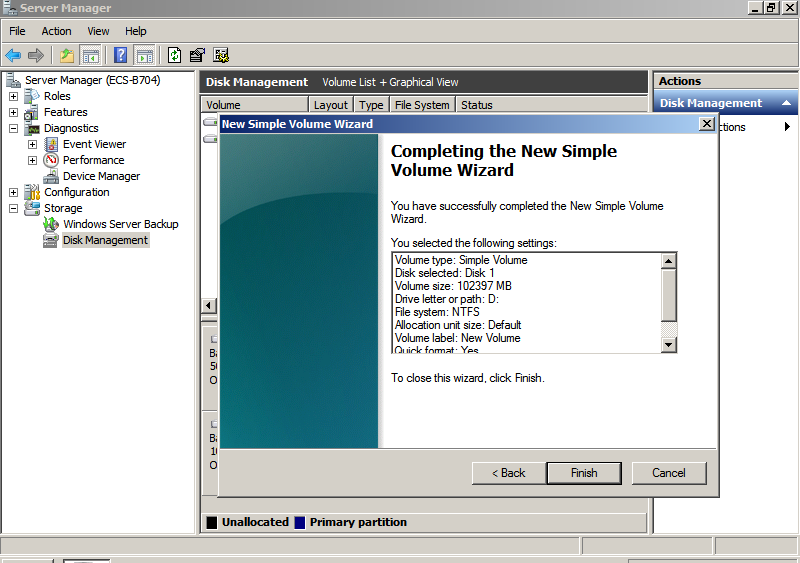

The partition sizes supported by file systems vary. Therefore, you are advised to choose an appropriate file system based on your service requirements.
- Click Finish to complete the wizard. Wait for the initialization to complete. When the volume status changes to Healthy, the initialization has succeeded.
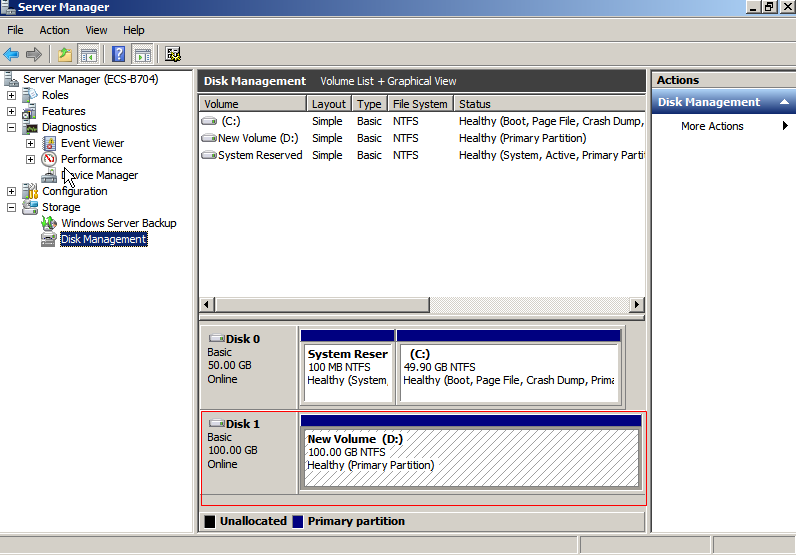
Feedback
Was this page helpful?
Provide feedbackThank you very much for your feedback. We will continue working to improve the documentation.See the reply and handling status in My Cloud VOC.
For any further questions, feel free to contact us through the chatbot.
Chatbot





